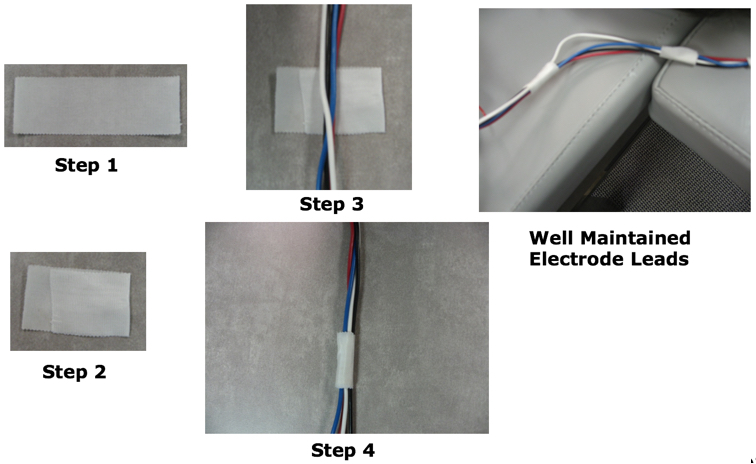Question
When performing evoked potentials, are there any tips for applying any type of electrode?
Answer
When applying any type of electrodes, including non-disposable and disposable, use the following guidelines:
- Tape the electrodes together (making a sleeve with the tape) or you can braid them together, that will help cut down on the noise.
- Do not mix electrode types.
- Do not want to mix the metals that are used on electrodes (i.e., silver, silver chloride, gold).
- Do not place the ground electrode near the heart because a large EKG can generate noise.
- Clinicians might use alternative placements for the ground electrode such as the sternum or the collarbone.
- If you are doing a bone conduction ABR, place electrodes on the front of the earlobes instead of the back.
- Explain to the patient the process of placing the electrodes.
- Gently clean the electrode site (do not abrade skin)
- Explain to the patient that you are going to clean their skin to make sure that we get all the dead skin cells off.
- Do not mix alcohol with NuPrep because this causes a stinging sensation.
- If you use Cz, an alcohol pad will help dissolve any hair products and will help reduce impedance.
- Electrodes on the earlobes or the mastoids should be symmetrical.
- All the electrode leads should run towards the top of the patient's head.
- As a best practice, do not turn the equipment on or off with the patient connected.
Non-disposable electrodes. Electrodes should be cleaned after each use. You can use a small toothbrush and warm water to remove any paste. Every site has their cleaning policy; some product companies might recommend an autoclave. Electrodes will not last forever; thus maintenance is essential. Bad electrodes will result in high impedance, and the waveform will be a noisy recording. You can get a low impedance with a lousy electrode, and suddenly you see excessive noise. Be aware and always have some backup electrodes available. A wet prep method works best instead of a dry prep. You can scrub the skin, but the wet prep works quite a bit better with the gel on the electrode. Then, prepare the electrodes by adding a small amount of paste by scooping the cup electrode in. Apply the electrodes firmly. You can use a piece of the cotton ball on top of the electrode, and then secure with a piece of first aid tape. After application, wait a moment for the electrodes to settle. Typically I take a moment to see what are the impedances because sometimes they start high and reduce. Also, be aware of silver chloride. Regularly check to see if they need to be re-chlorinated. To re-chloride the electrodes, place the cup of the electrodes into a small amount of chlorine bleach and soak for approximately 20 minutes. Do not let the wires touch the bleach, just the cup portion.
Disposable electrodes. With disposable electrodes, typically the dry prep works best. On the back of your snap electrode, you can put a drop of water or saline, and it will make the gel stickier. Some disposable electrodes can be cut down in size.
You want to keep your electrodes together. Here's just a quick step-by-step of how you make a sleeve for the electrodes. Some people like to braid them. Other people like sleeves because if one of the electrodes goes bad, you can quickly add on another. Again, the purpose of that is to cut as much noise down as possible.

This Ask the Expert is an excerpt from the text course, Evoked Potentials Part 1: Good Practice and Auditory Brainstem Response. For more information please visit please visit www.otometrics.com or the Otometrics Partner Page on AudiologyOnline.

